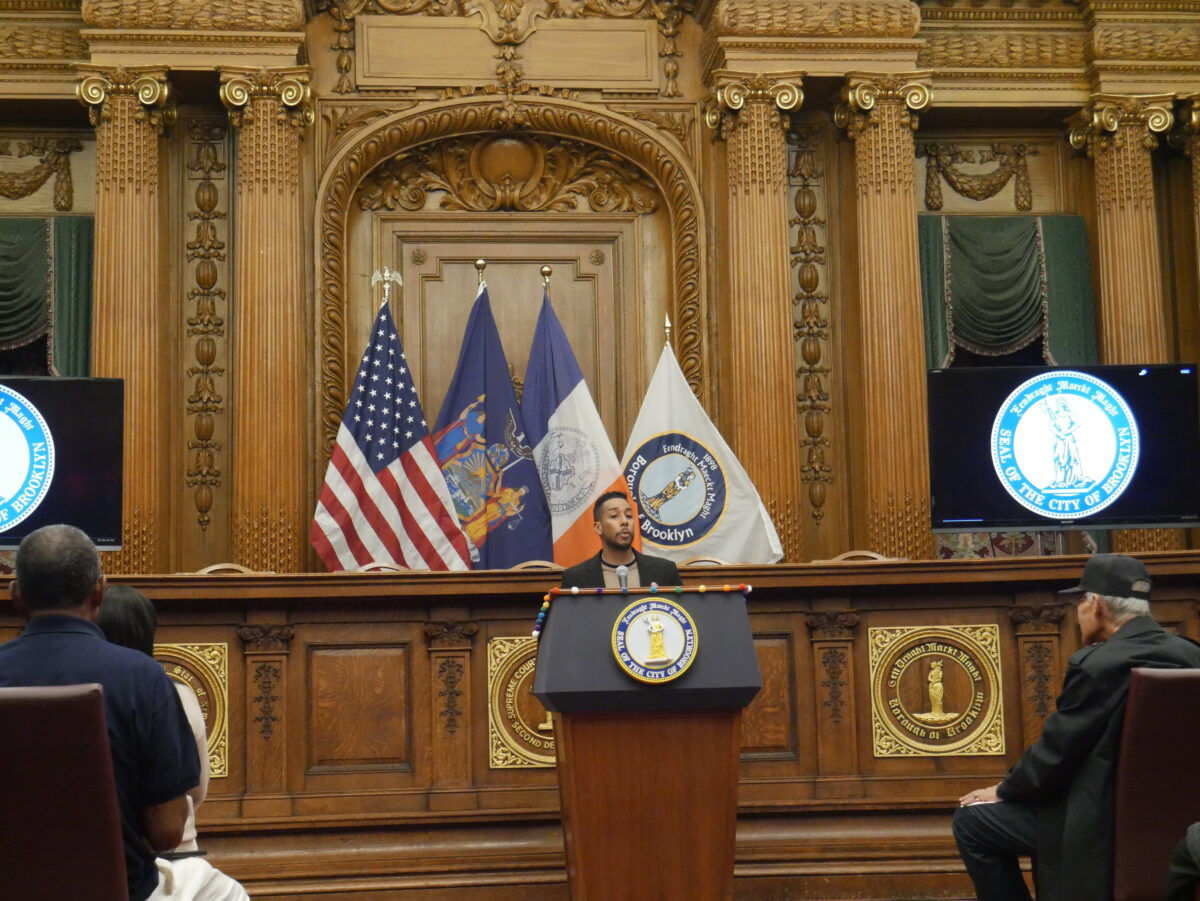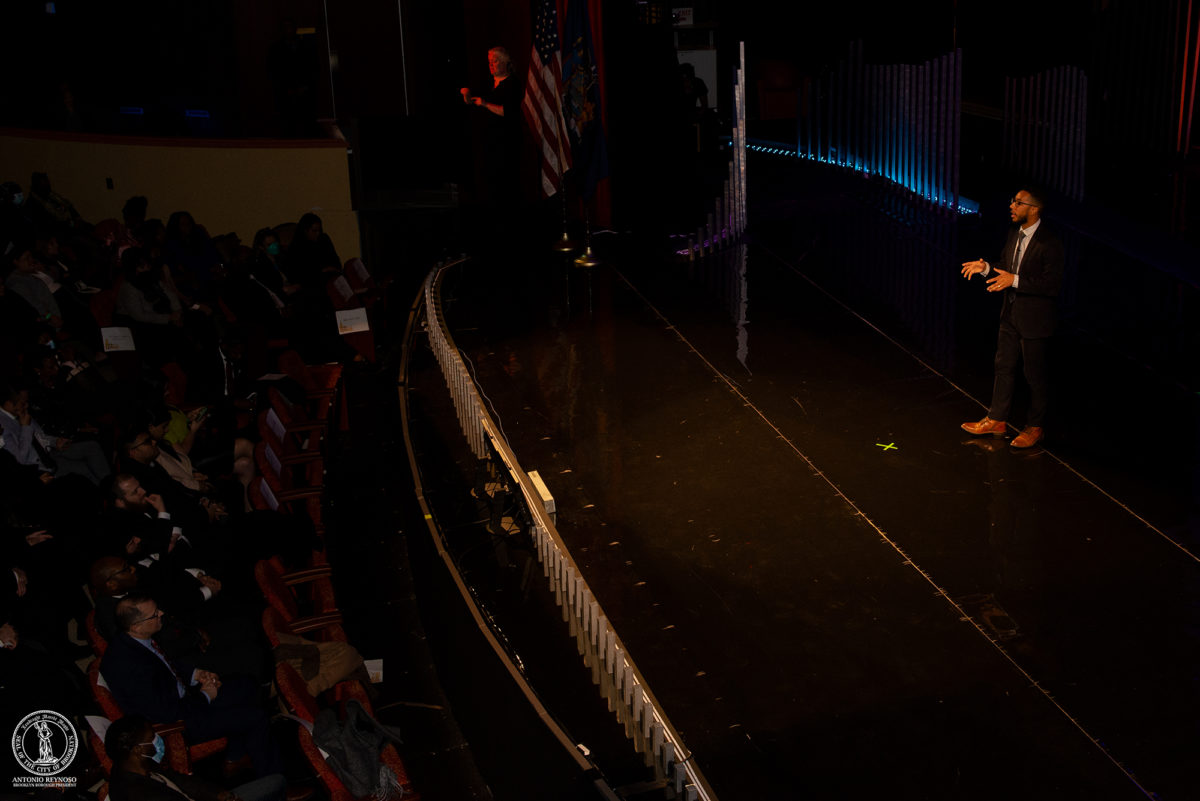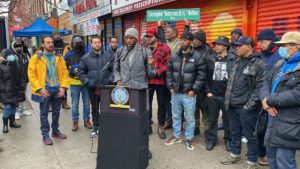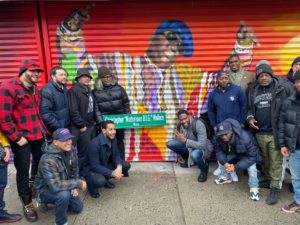Antonio Reynoso Announces Diversion of Funds as Rumors of a Potential Mayoral Campaign Swirl
By Oona Milliken | omilliken@queensledger.com
In the historic walls of Brooklyn’s Borough Hall on Wednesday, Sept. 27, Borough President Antonio Reynoso, the first Latino to be elected to the position, announced that his office would be redirecting funds toward aiding his constituents with support services rather than social events and large gatherings. The decision came at a time when Mayor Eric Adams announced this month that all city agencies must cut their budgets by 15 percent by April 2024. According to Reynoso, this is a necessary measure for dealing with a lack of funds across the city.
“Right now, there’s a lot of need in Brooklyn. As of today, I am announcing that moving forward, my office will direct Borough Hall funding and resources toward delivering aid to New Yorkers and alleviating the strain on city services,” Reynoso said. “I cannot in good conscience host parties and celebrations when so many Brooklynites are struggling. I’m committed to using the platform and resources that I have to deliver on behalf of those who need the most help because it’s the right thing to do.”
The Borough President did not go into the specifics of how the funding would be allocated but firmly stated that parties and celebrations at Borough Hall would come to an end as more than 110,000 migrants have come to the city and New Yorkers, both native and new, are fighting to make ends meet. In a recorded speech on Sept. 9, Adams said the city-wide cuts were in response to New York’s continuing migrant crisis. His statement came days after he was recorded saying that the migrant crisis will destroy New York City.
“As you know, we’re in the middle of a humanitarian crisis, a crisis that will cost our city $12 billion dollars over three fiscal years,” Adams said. “While I have worked closely with city agencies to reduce the impact that these cuts may have on New Yorkers who rely on our services, the truth is that longtime New Yorkers and asylum seekers will feel these potential cuts, and they will hurt.”
On Wednesday, Reynoso said that the mayor’s management report shows that the city is struggling to meet the basic needs of New Yorkers, and pointed to a decline in the quality of city services such as SNAP, cash assistance and NYCHA public housing.
“Homelessness in New York City has reached the highest levels since the Great Depression. The city’s rate for processing food stamps is the lowest it’s been since 2006. In fact, less than 40 percent of SNAP benefits were processed on time, down from 91.9 percent when Adams took office,” Reynoso said. “Not to mention that the average timeline for repairing a single vacant NYCHA unit has surged to 370 days. It takes one year to repair a single vacant NYCHA unit, and it is up from around 161 days the year before, nearly five times longer than it took to make repairs in 2019.”
Reynoso said that his announcement was not a retort against Adams, but a nod to the Mayor’s intention of cutting back costs. Despite this remark, Reynoso came out hard against the Mayor’s proposed budget cuts during the New York City Council Progressive Caucus rally on Sept. 19, also outside of Brooklyn Borough Hall. Members of the Caucus, which include representatives.
Lincoln Restler, Shahana Hanif, Jennifer Gutierrez and Carmen de la Rosa, proposed higher taxes on the rich, rather than cuts of social services, to cover the cost of dealing with the new influx of migrants. In a speech, Reynoso said he was disappointed with how the mayor’s office has dealt with the migrant crisis.
“It’s the first time a mayor has stood up and said ‘I give up. I throw my hands up.’ Who does that? Not in New York,” Reynoso said during the rally.
Hector Gonzalez, a Vietnam Veteran and an attendee of the event on Wednesday, said he was pleased that Reynoso was cutting back social gatherings in order to spread out city resources, especially as an immigrant from Puerto Rico.
“We learned that today is going to be the last time they’re going to get together because of the crisis that is going on. He wants to take advantage of the crisis to address what is really needed. I believe that’s a plus for everyone,” Gonzalez said. “This is the time that we have to contribute, in every sense, to try to better our society. The other thing that people forget is that 100 years ago, more than they, we also have immigrants, and they went through the same thing that is happening nowadays.”
As the 2025 Mayoral election creeps closer, there are rumors of who will challenge Adams. According to reporting by Politico, Reynoso’s name has been floated, but it is unsure if he will make a run for it. According to Gonzalez, Reynoso should focus on his constituents in Brooklyn before he makes the jump to another position.
“I believe that’s a little bit far nowadays, because he has so much work on his hands, and he wants to concentrate on what those needs are,” Gonzalez said. “When you start in one position, and you think of all the other ones and you don’t take care of what you’re doing, that is not proper. I believe the people have to be supported for what they voted, and when the time comes, then a decision could be made.”






